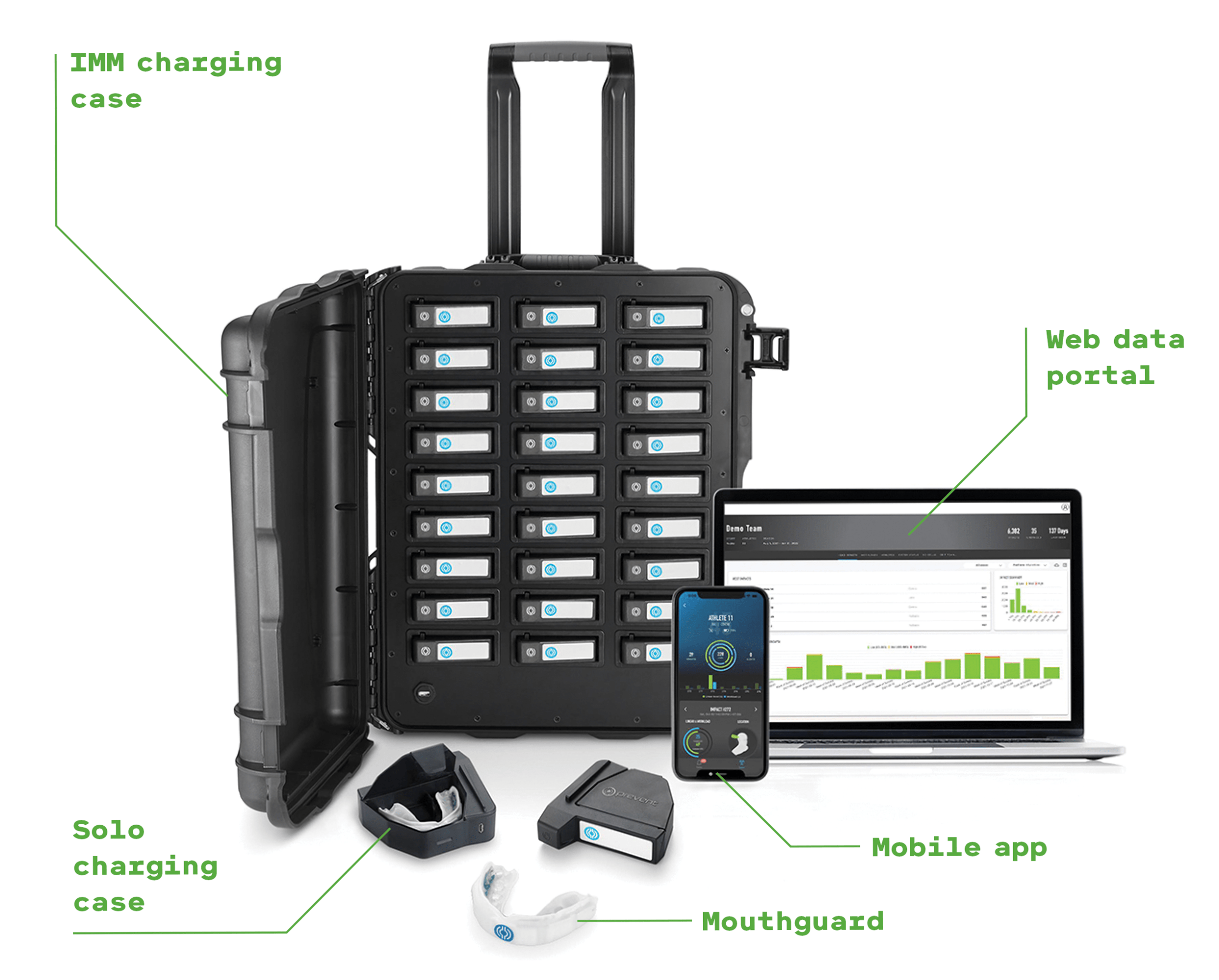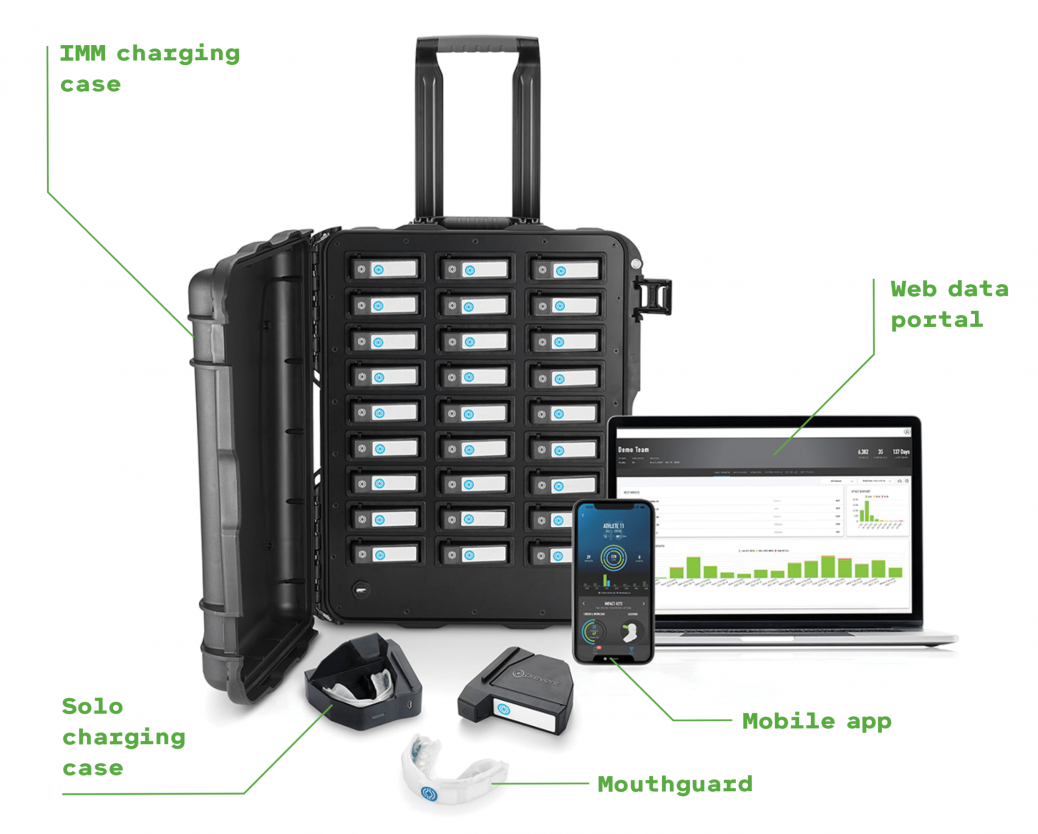Appreciation of the real risks of head injuries has been a long time coming. “Even 10 years ago, if someone took a big hit they were told to get up and play or keep going,” says Mike Shogren, CEO of Prevent Biometrics. “Now reducing major head impacts and understanding concussion risk is a major focus in sports and the military.”
Prevent is one of several companies developing new sensors to precisely measure and record head impacts, which would help identify possible concussions and provide data for studies of cumulative effects.
Scientists have been trying to measure the forces involved in head trauma for a long time, says Adam Bartsch, the company’s chief science officer. “Decades ago, scientists had to use Rube Goldberg contraptions to study head impact,” he says. “Sometimes these were made from a dental mold with a rigid plate and sensors bigger than dice, with a 10-meter-long cable connecting it to a computer. The wearer would drool and the data wasn’t perfect, but it was the best they had.”
First conceived at the Cleveland Clinic, Prevent’s device, the Impact Monitoring Mouthguard (IMM), fits into the wearer’s mouth, working as both a monitoring tool and a functional mouthguard. It calculates the force, location, direction, and number of impacts and can then transmit data via Bluetooth to other devices for assessment.
Prevent is using the IMM to study parachute landing falls (or PLFs), a landing technique that was developed by the United States Army as part of its paratrooper training program, using over 2,000 paratroopers as subjects. A correctly executed PLF absorbs the shock of hitting the ground as the parachutist lands feet first and falls sideways, successively distributing the landing shock along the calves, thighs, hips, and back. But an error can whip the parachutist’s head backwards and onto the ground. The IMM’s sensors revealed that this occurs far more often than anyone realized.

PREVENT BIOMETRICS
“We found a significant head impact in about 5% of jumps,” says Bartsch. “That’s about 30 times as much as the published incidence of concussion in paratroopers.” A battery of tests confirmed that the events the mouthguard registered as possibly causing concussions had in fact done so. Paratroopers tend to just get up and carry on after a bad landing, so the official figures had previously reflected only the injuries of those who were physically unable to get up on their own.
In sports, similarly, athletes are often encouraged to “get over it” rather than report an injury. Prevent is carrying out a large-scale project with World Rugby, which will monitor players and allow coaches to take injured players off the field and have them assessed. (Several other instrumented mouthguards—the Biocore, the ORB, and HitIQ—are being developed for other sports, including boxing and lacrosse.) In the future, Prevent hopes to be able to evaluate the total effect of lots of smaller shocks to see under what circumstances they cause serious cumulative injury. “Understanding total exposure on top of just major impacts is also critical,” Shogren says. “It’s like in a boxing match. The impact that knocks you out at the end might not have knocked you out on its own in the first round.”
David Hambling is a technology journalist based in South London.





Recent Comments